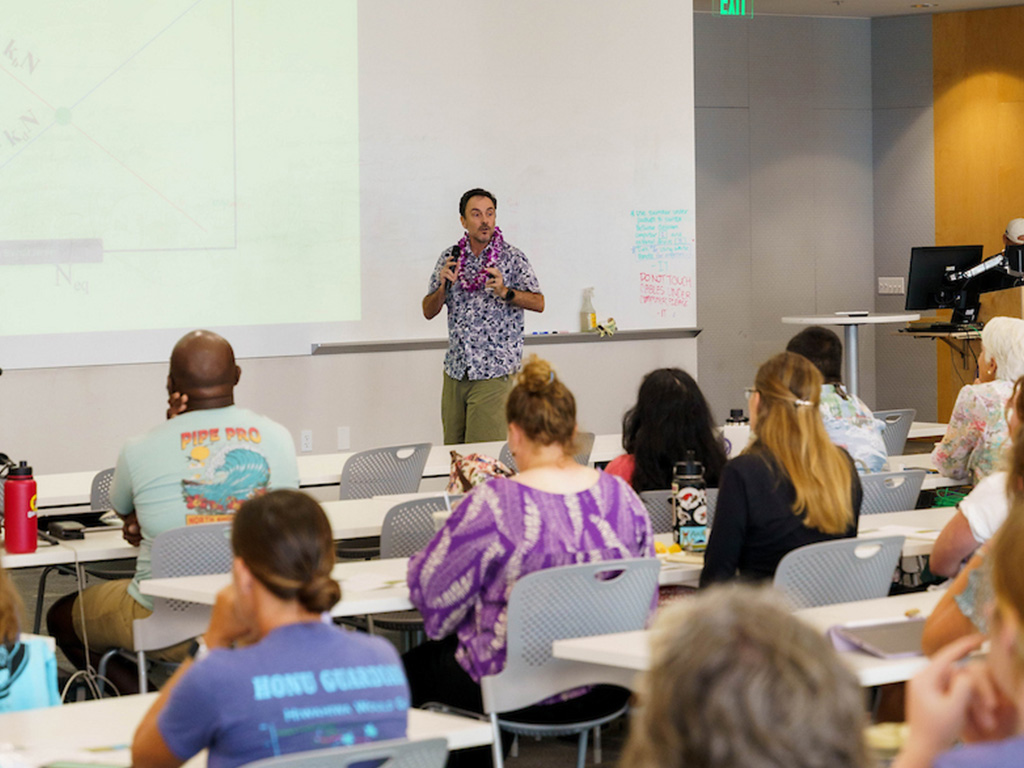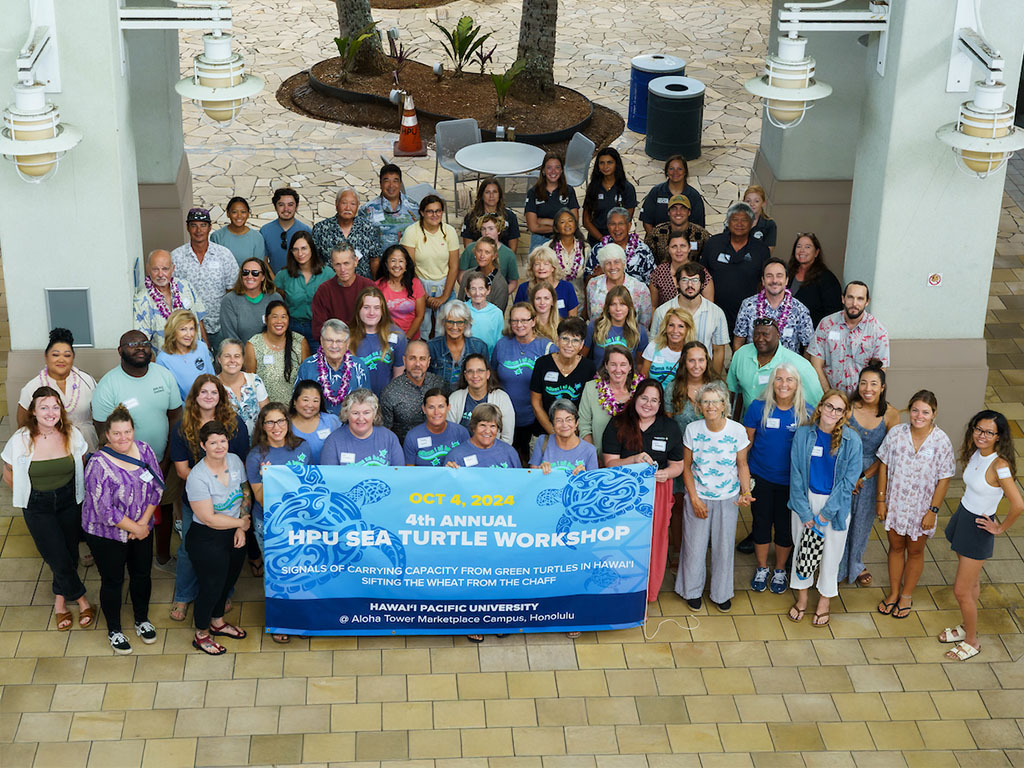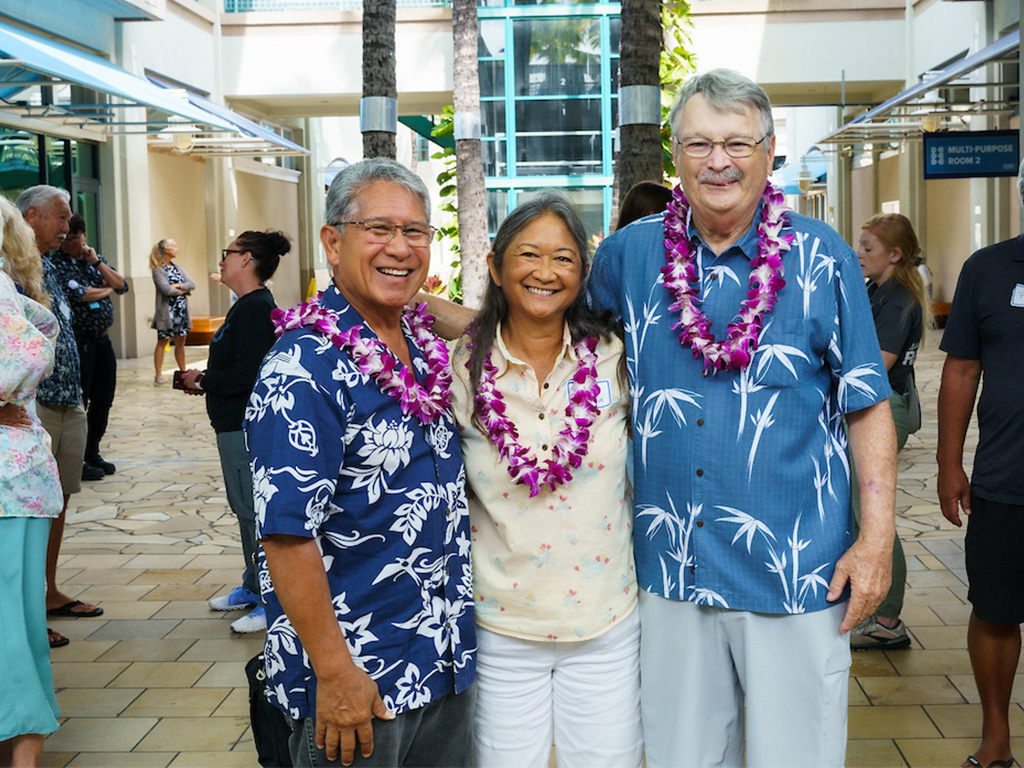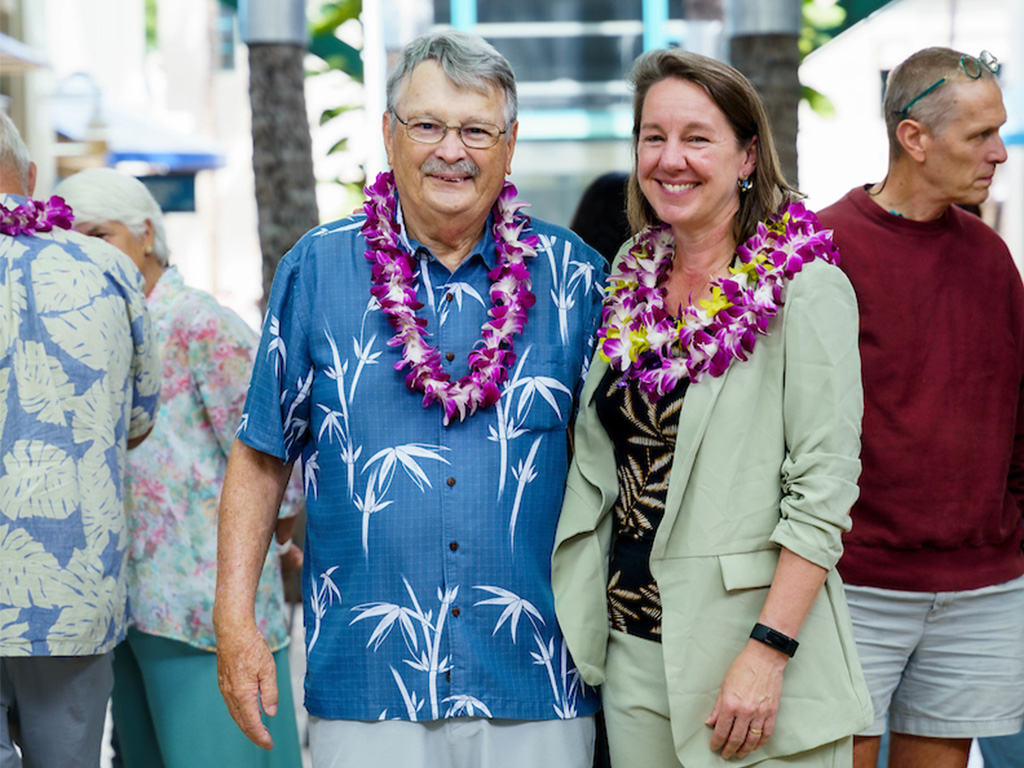The 4th Annual Sea Turtle Symposium hosted by Hawaiʻi Pacific University (HPU) took place on October 4, 2024, marking another successful event in the university’s ongoing efforts to foster collaborative research and education around sea turtle conservation.
Themed, “Signals of Carrying Capacity from Green Turtles in Hawaiʻi: Sifting the Wheat from the Chaff,” the symposium brought together scientists, students, and community members, offering a dynamic blend of presentations and discussions centered on the future of Hawaiʻi’s green sea turtles, or “honu,” and marine ecosystems.
Celebrating Collaboration and Learning
The event attracted an impressive 287 registrants, with 117 attending in person and 170 joining via Zoom. This year’s agenda featured 10 presentations, including contributions from distinguished experts like George Balazs, a senior sea turtle scientist and retired NOAA researcher, and HPU Professor of Oceanography David Hyrenbach, Ph.D.
“The workshop gets better with each passing year,” Balazs said, reflecting on the event’s success. “It’s a unique opportunity to combine cutting-edge research with a relaxed setting of aloha and good cheer. I’m exceedingly pleased to partner with my colleagues and friends at HPU.”
The symposium kicked off with a traditional Hawaiian blessing, led by Kahu Hanai Danny Akaka Jr. and Anna Akaka, reminding attendees of the deep cultural connection between Hawaii’s people and its marine life. Following the blessing, Brenda Jensen, Ph.D., acting senior vice president and provost and professor of biology at HPU, gave the opening remarks, emphasizing the importance of interdisciplinary collaboration.
“Today, we bring together voices from various fields: biology, oceanography, conservation, and community engagement. This simply illustrates how science and culture intersect in meaningful ways,” she said.

HPU Professor of Oceanography David Hyrenbach, Ph.D., presents.
Key Presentations and Insights
Among the most compelling presentations was Hyrenbach’s exploration of mathematical models to understand the carrying capacity of green turtles in Hawaiian ecosystems. “This workshop illustrates the type of applied and multidisciplinary science that motivates our students to learn and seek solutions to pressing environmental issues,” he explained.
Another highlight a presentation by Lisa Harrington, Ed.D. on Kauai’s honu phenomenon, during which she discussed the intricate balance of coexistence between humans and sea turtles. Dr. Milani Chaloupka, Ph.D. provided statistical insights into global turtle populations which further deepened the discussions, showcasing the role of data in crafting effective conservation strategies.
“The wide array of presentations this year really demonstrates the diversity of expertise required to tackle these issues,” Jensen said. “Whether it’s community-driven initiatives, biological studies, or the role of policy, every piece of the puzzle is crucial.”
A Unique Platform for Sea Turtle Conservation
The Sea Turtle Symposium has grown into a key event for Hawaiʻi’s conservation community. “It’s truly one of a kind,” Balazs said. “It provides an open, relaxed setting for anyone interested in sea turtles—students, researchers, and the general public—to come together and exchange ideas. It’s clear from the growing attendance that this event fills a much-needed niche.”
Looking ahead, the symposium is already sparking ideas for future focus areas. Balazs suggested potential topics like the largely unseen loggerhead turtles in Hawaiʻi or the critically endangered hawksbill turtles. “We’ve focused on the green turtles which made up 99% of the turtle population in Hawaii. But there are so many other “unseen” sea turtles, and these generally discrete populations are worthy of greater attention,” he explained.
Hyrenbach also shared his thoughts. “A future workshop could focus on integrating the different environmental and human drivers of sea turtle populations in Hawaiʻi to anticipate what the future will bring,” he said.
Continuing the Legacy of Conservation
HPU’s Sea Turtle Symposium is not just about science—it’s about community. This annual event underscores the importance of blending traditional knowledge with modern research, a theme that resonated throughout the day.
“Conservation is not just about preserving species. It’s about fostering relationships between people, ecosystems, and the cultural heritage that connects us to the natural world,” Jensen added.
The symposium’s success demonstrates the growing interest and commitment to sea turtle conservation, not just among scientists, but within the broader community. As attendees left with newfound knowledge and inspiration, they also left with a collective determination to continue the important work of protecting Hawaii’s marine life.
“Each year, we move closer to answering the critical questions surrounding conservation of Hawaii’s beloved honu, and I look forward to what’s to come,” Balazs concluded.





